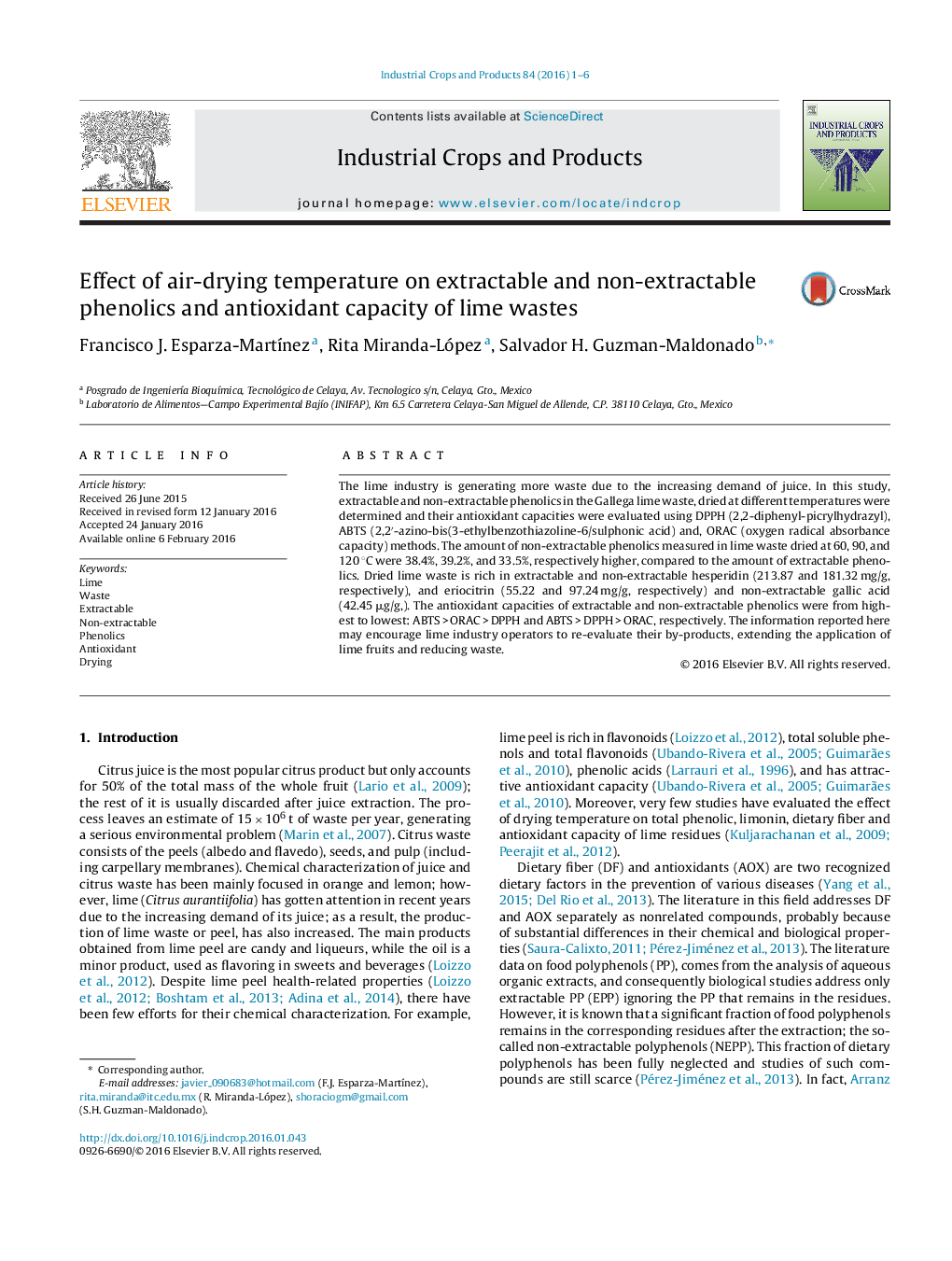| Article ID | Journal | Published Year | Pages | File Type |
|---|---|---|---|---|
| 4512380 | Industrial Crops and Products | 2016 | 6 Pages |
•We evaluated phenolics and antioxidant activity of dried lime waste.•Temperature increased phenolics and antioxidant capacity.•Dried lime wastes showed high fiber, flavonoid and phenolic acid levels.•Information here might encourage less lime waste.
The lime industry is generating more waste due to the increasing demand of juice. In this study, extractable and non-extractable phenolics in the Gallega lime waste, dried at different temperatures were determined and their antioxidant capacities were evaluated using DPPH (2,2-diphenyl-picrylhydrazyl), ABTS (2,2′-azino-bis(3-ethylbenzothiazoline-6/sulphonic acid) and, ORAC (oxygen radical absorbance capacity) methods. The amount of non-extractable phenolics measured in lime waste dried at 60, 90, and 120 °C were 38.4%, 39.2%, and 33.5%, respectively higher, compared to the amount of extractable phenolics. Dried lime waste is rich in extractable and non-extractable hesperidin (213.87 and 181.32 mg/g, respectively), and eriocitrin (55.22 and 97.24 mg/g, respectively) and non-extractable gallic acid (42.45 μg/g,). The antioxidant capacities of extractable and non-extractable phenolics were from highest to lowest: ABTS > ORAC > DPPH and ABTS > DPPH > ORAC, respectively. The information reported here may encourage lime industry operators to re-evaluate their by-products, extending the application of lime fruits and reducing waste.
